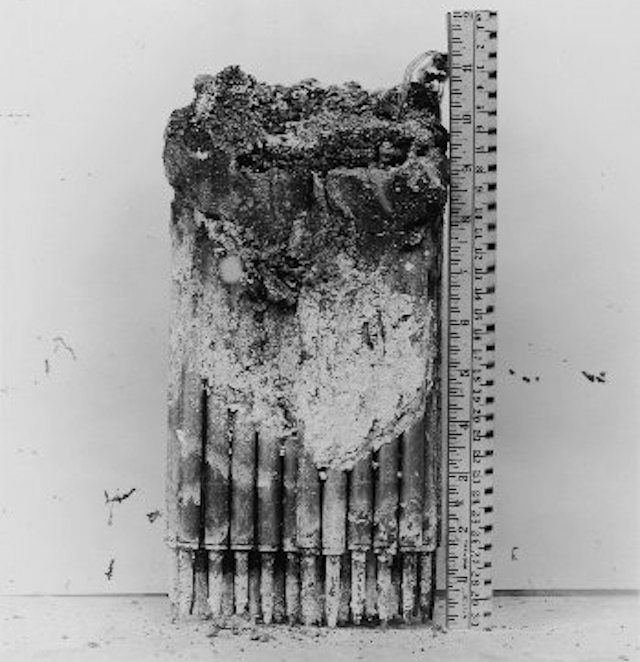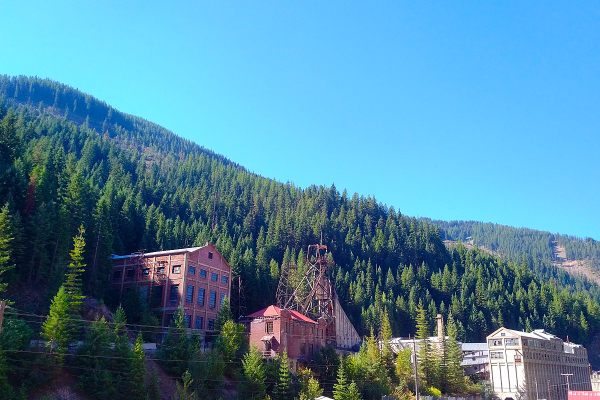The Behind-the-Scenes Story of an Unplanned Meltdown at America’s First Nuclear Power Reactor
Ray Haroldsen didn’t really notice anything was wrong.

When the core of the Experimental Breeder Reactor No. 1 melted down, there was no explosion. It didn’t make a sound at all. There was no smoke, no fire, no steam. Engineer Ray Haroldsen was working in his office “a short distance from the control room,” as he later wrote, and didn’t know there had been a meltdown until a technician came by to tell him.
The federal government built EBR-I, as the reactor was called, in the desert of Idaho, not far from the city of Arco, as a proof-of-concept for intriguing ideas about nuclear power. Before EBR-I started up, nuclear reactions had been used to produce only tiny amounts of electricity. On December 20, 1951, the experimental plant created enough power to light four bulbs, 200 watts apiece. The next day, the reactor was powering an entire building. It was the first peaceful use of atomic energy—the first example of nuclear power that could be used to light a house or a city. But when the press caught wind of the core’s unplanned meltdown, the reactor would become the focus of intense scrutiny and described as an “out of control” experiment, and one of the first accidents associated with nuclear power.

In addition to demonstrating that nuclear could be a viable energy source, scientists there wanted to show they could create a “breeder reactor,” or a highly efficient reactor that, in theory, creates more fissile material—the nuclear fuel that undergoes fission to create energy—than it consumes. EBR-I, for example, used uranium as a fuel source, which created an isotope of plutonium, another fissile material, as a byproduct. By 1955, the reactor had done everything it had been designed to do, but there was one more mystery the EBR-I team wanted to solve, a quirk of the reactor’s behavior: It didn’t respond to changes in coolant flow in the most stable way.
Since the reactor was nearing the end of its useful life, the scientists decided to conduct an experiment that was riskier than they’d normally have tolerated. They decided to turn the coolant off while slowly turning the power up, in the hopes of determining what made the reactor act the way it did. They knew there was a risk the core could be destroyed, but they planned to proceed slowly and back off at the first sign of danger.
The experiment ended more quickly than they thought it would. The power produced by the reactor started rising and rapidly went off the scales. Haroldsen’s boss yelled to the technician to shut the reactor down. In this video, Haroldsen, in the EBR-I control room, explains exactly what happened next.
Outside the control room, the only sign that the experiment had gone wrong was the radiation alarm. The reactor building had to be vacated, but even then people in the nearby annex were allowed to continue working. And, after that building was ordered to be vacated, they were given plenty of time to pack up their records and belongings, according to Haroldsen.
Among the evacuated workers, “there was a lot of talk” about what had just occurred, Haroldsen says in the video above. The year before, in 1954, at the same site, researchers had deliberately destroyed another reactor past its prime, BORAX-I, to see what would happen, so they had an idea of how a burst of power could melt down the entire core. “After a few hours, we had one guy who wanted to come in and make a survey and see if he could actually estimate the amount of radioactivity,” Haroldsen continues. “That could be backtracked to see tell us how much damage the reactor had.” He suited up and went into the radioactive area.
But those initial investigations didn’t reveal enough to tell the team what had happened inside the reactor, and they weren’t allowed to look. An order had come from the Atomic Energy Commission (AEC) that they were not to open the reactor and release the radioactive gas that had collected inside. The worry wasn’t the danger to EBR-I workers, but to a separate monitoring program meant to keep tabs on the Soviet Union’s progress in developing its own atomic bomb. A gas release could compromise its results.
“Given a free hand, we would have been inclined to look inside,” Haroldsen said in an interview with Atomic Insights. Instead, they had to wait months. In the meantime, they weren’t allowed to say anything publicly about the test, ever after the head of the AEC mentioned the meltdown at a conference. “Our telephones began to ring with news media wanting to know more details,” Haroldsen said. “We were still under orders to remain silent.” The media had to put together stories with little information, and in those narratives, “we were converted from people who were described by the media as ‘brilliant scientists’ to ‘incompetent scientists.’”

Five months after the reactor was shut down, the EBR-I team was finally allowed to have a peek. The football-sized core of uranium had partially melted down and fused together at the center. To eventually solve the mystery of why it melted, they had to rebuild the entire reactor and start it up again.
However, the design was ever-so-slightly different, and they weren’t able to recreate the issue, Haroldsen writes, but that was clue enough to the cause of the incident. In the older design, the fuel rods could bend, just a little bit—enough to make the power in the reactor fluctuate as the rods moved toward or away from the center of the reactor.
For a nuclear meltdown, the EBR-I incident was not dramatic. Officially, it’s not even classified as a nuclear accident. The scientists and engineers knew they were taking a risk. They didn’t make a mistake so much as explore to the edge of knowledge, and just a little beyond.
You can visit Experimental Breeder Reactor No. 1, a National Historic Landmark, on Obscura Day, May 6, 2017, and learn more about how usable energy was first generated from nuclear material.


























Follow us on Twitter to get the latest on the world's hidden wonders.
Like us on Facebook to get the latest on the world's hidden wonders.
Follow us on Twitter Like us on Facebook